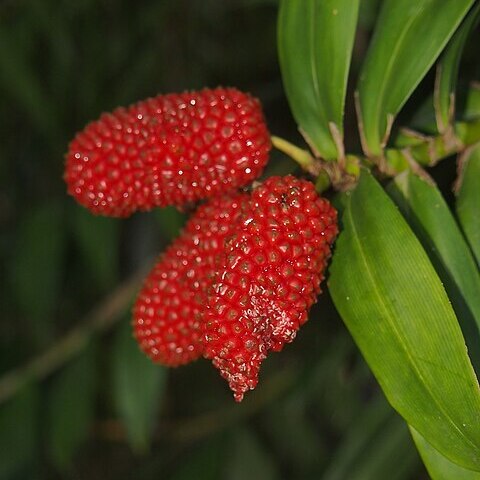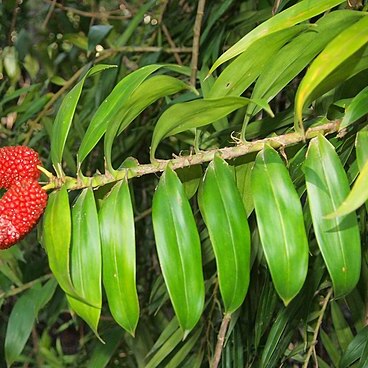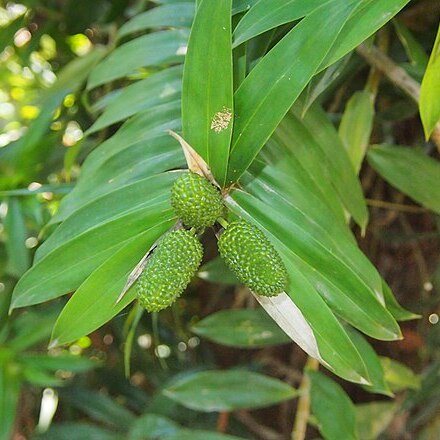It partly attaches to and grows from other plants. It is an evergreen vine. It climbs to a height of 30 m. The stem is vigorous with many branches. It scrambles over logs and rocks. The stem is less than 1 cm across. The leaves are fairly rigid and curve and have spiny edges. They are 30-50 cm long and 0.6-0.8 cm wide. The form a short sheath around the stem at their base. The flowers are small and have red bracts around them. The bracts are 5-7 cm long by 2.5-3.5 cm wide. The female heads are in groups of 1-4 and are 3-4 cm long by 2-3 cm wide. The male spikes are in groups of 1-3 and are 2-3 cm long by 1-1.5 cm wide. The fruit is a cluster of berries. Each berry is 0.7 cm across and they are bright red. The fruit are produced at the stem tips. The fruit are edible



